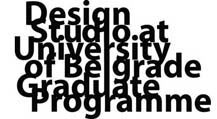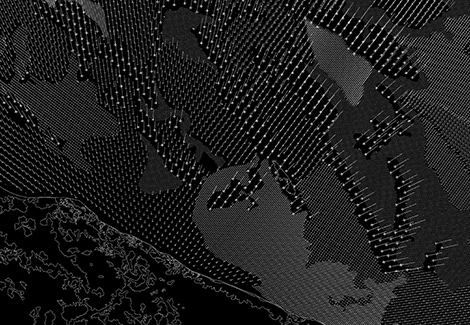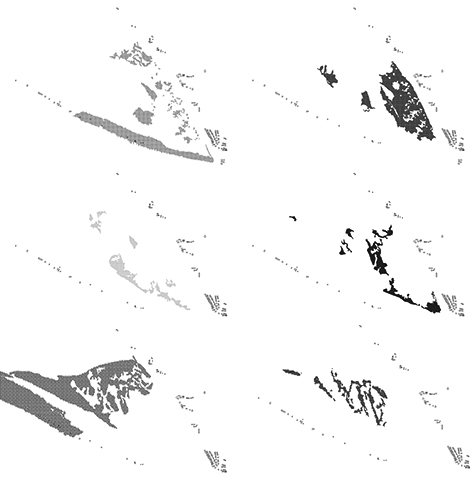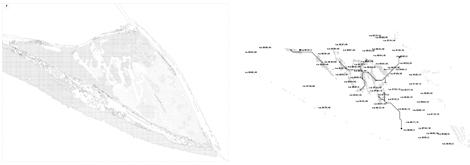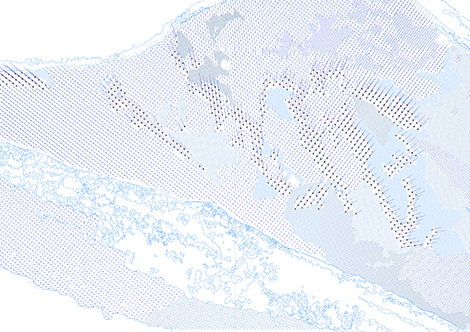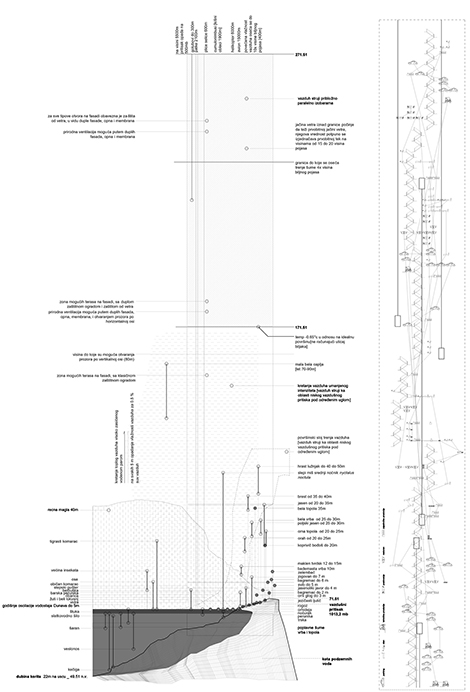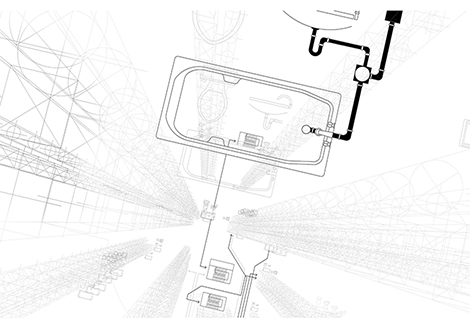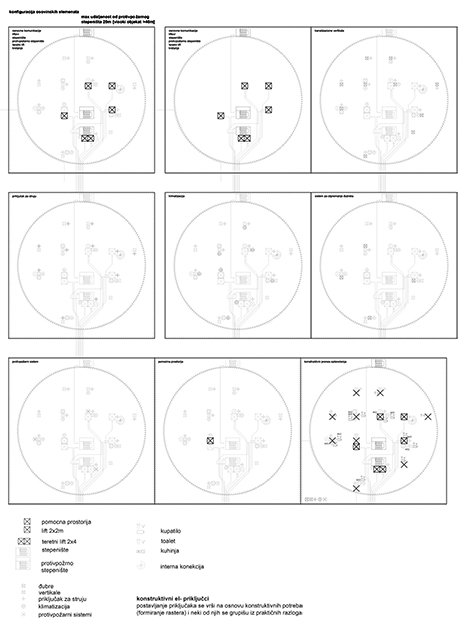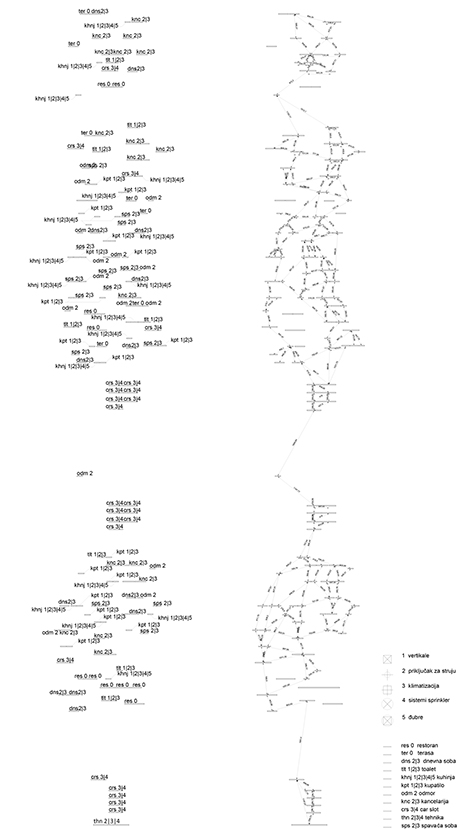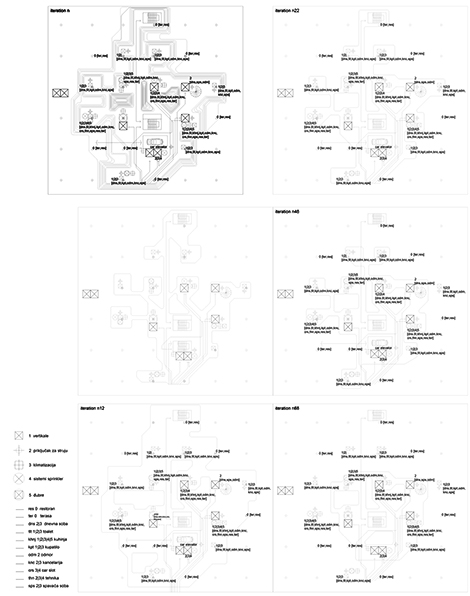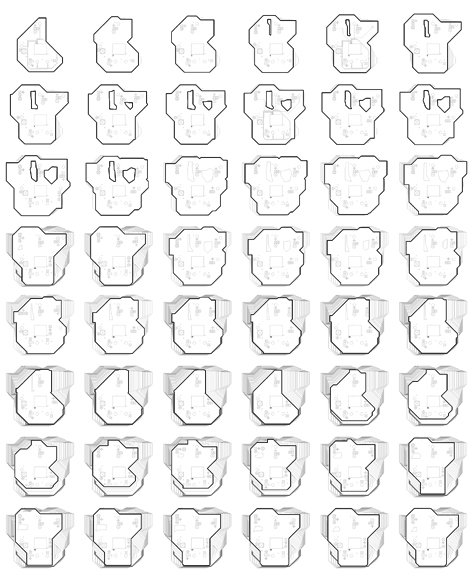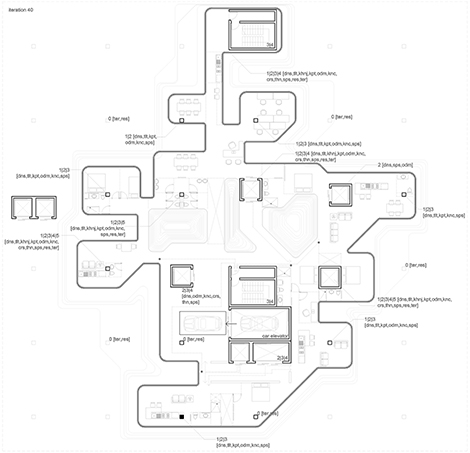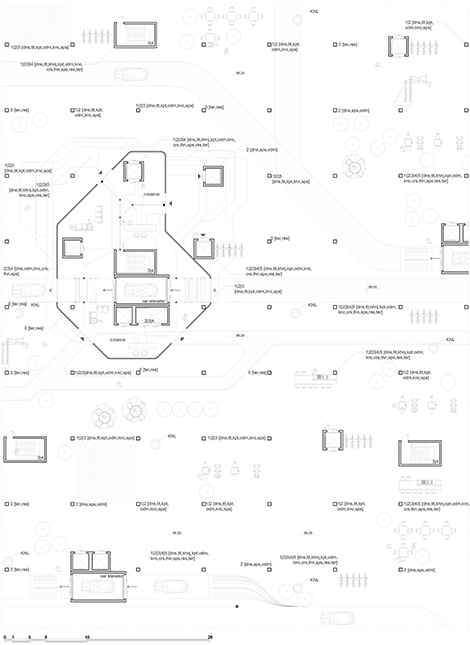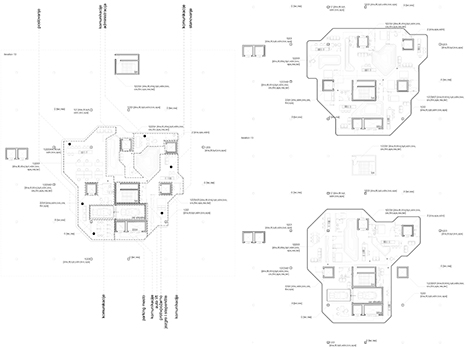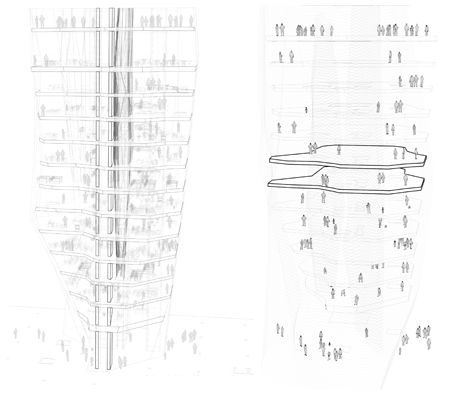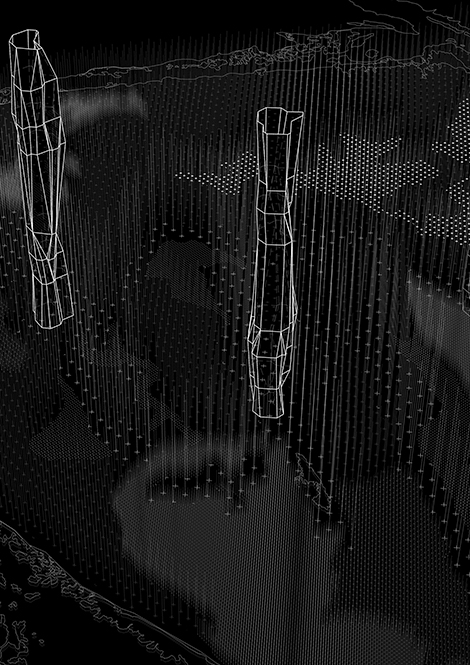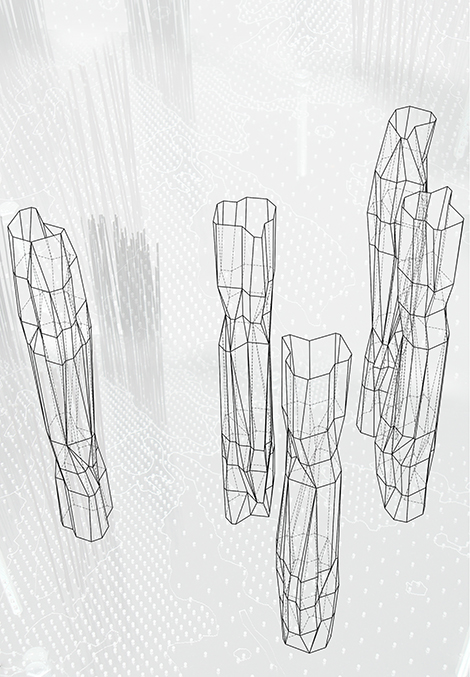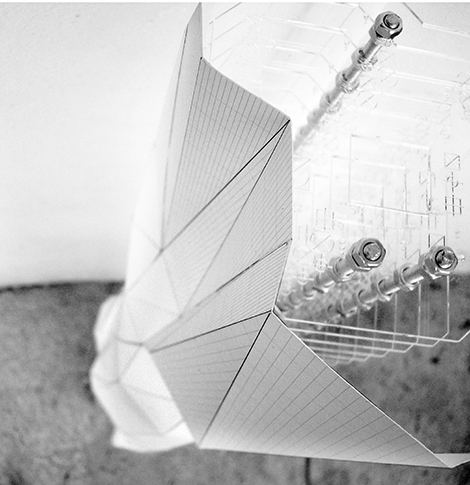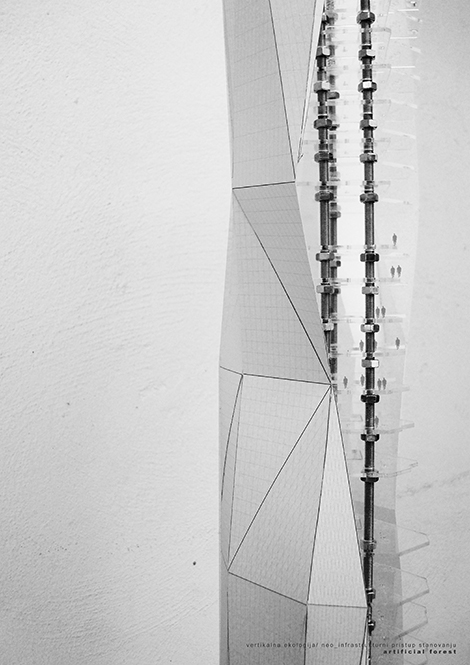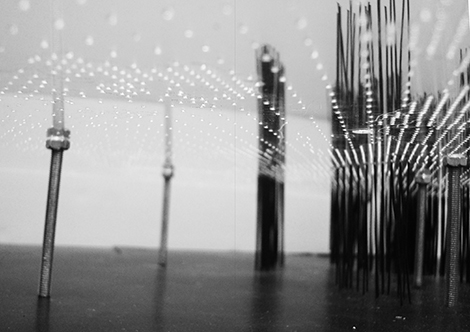Infrastructure: function to performance
This line of study is set to explore the role of infrastructure in architectural and urban and re-examine the relevance of the infrastructural approach to the housing development within the natural surroundings. Suggested approach is based on the design process which can be steered in the way to enable natural growth which would in return enable the high density urban growth. The overall form is never defined but can be viewed through the formation processes while its performance is observed based on the behaviour of the users according certain time frame. Any building resulting from this approach is envisioned as a multi-functional residential structure providing numerous possibilities in occupancy scenarios. Vertical distribution enabled by structural and infrastructural mechanisms is observed as a network which can provide for polyvalent use of space.
The aim is to create relationship between the notions of physical limits and patterns of use whereby gradient boundaries appear to enable adaptability and flexibility of both. Inspired by the development in the fields of biology and ecology, this approach seeks to translate the logic of mechanisms of artificial life into the strategy of spatial design. The infrastructure is observed as a system which could become an object in itself and its relevance is translated from a functional system of an object to the very logic of spatial construction. Secondary intention is to connect standard dwelling elements to the natural surroundings. The approach may be best explained with the following keywords: infrastructure, environment, eco-zones, gradient, neo-biology, polyvalence, adaptation.
